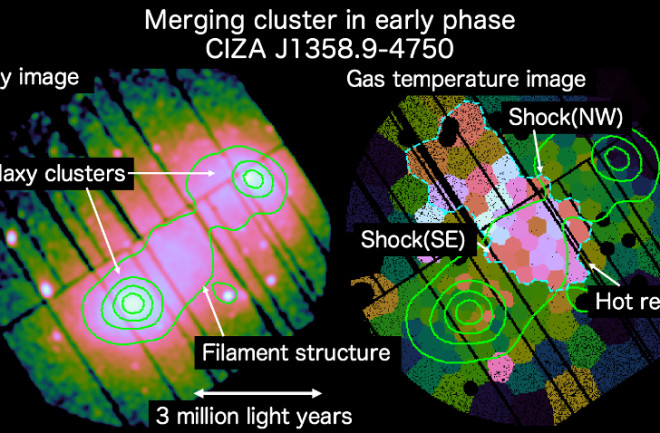A new paper opens a window on the largest astronomical event in the known universe: the merging of two galaxy clusters. It finds that during the galactic crunch, just one side exerts as much energy as a billion suns burn in a year – and does so every second.
Galactic clusters are massive collections of galaxies bound together by gravity. (We in the Milky Way belong to the Laniakea Supercluster.) They include both galaxies and clouds of gas, which mix together vigorously when two clusters collide. The gas typically becomes the star of the show since stars don’t normally collide when groups of galaxies merge.

